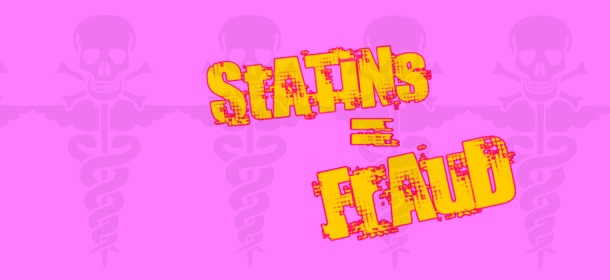Featured
Why Are Gruesome Images Forced on Cigarettes, But Not Cosmetics, Alcohol or Junk Food?
Why are cigarettes under attack? Junk food and alcohol do far more harm—yet governments give them a pass. Why are graphic labels only required on cigarettes?
There is a shameful double standard that exists at the expense of smokers. We all know smoking is bad for our health and that modern-day cigarettes are the equivalent of cancer on a stick. Smokers know it too. But why do government officials allow graphic images of disease on cigarette packages without extending the same courtesy to the labels on cosmetics, alcohol and junk food, some of which cause more disease and deaths annually than tobacco.
First let me be clear that I’m not a smoker and not defending smoking. However, I find it very convenient that governments take such drastic measures to inform the public about the health risks associated with smoking and glance over more serious, although masked as casual threats to our health. Could the corporate profit machines that run the gears of politicians have anything to do with it?
Heart disease causes half of all deaths in the United States and far more deaths than lung cancer. Statistics from the American Heart Association show that 75 million Americans currently suffer from heart disease, 20 million have diabetes and 57 million have pre-diabetes. These disorders are affecting younger and younger people in greater numbers every year. Toxic foods are the number one cause of chronic inflammation. This repeated injury leads to heart disease, stroke, diabetes and obesity.
What are the biggest culprits of chronic inflammation? Quite simply, they are the overload of simple, highly processed carbohydrates (sugar, flour and all the products made from them) and the excess consumption of omega-6 vegetable oils like soybean, corn and sunflower that are found in many processed foods. More than 95% of all processed foods including fast food contain the above ingredients.
So essentially, processed foods are at least equal to if not a much greater risk to our health than smoking. So why do we not allow graphic images of heart disease, diabetes and obesity on these foods? Obviously, the answer is that they may not sell as well which would upset the food industry and corporations that run the big agriculture.
What about alcohol? Twenty-five to forty percent of all patients in U.S. general hospital beds (not in maternity or intensive care) are being treated for complications of alcohol-related problems. Annual health care expenditures for alcohol-related problems amount to $22.5 billion. The total cost of alcohol problems is $175.9 billion a year (compared to $137 billion for smoking). Untreated alcohol problems waste an estimated $184.6 billion dollars per year in health care, business and criminal justice costs, and cause more than 100,000 deaths. Health care costs related to alcohol abuse are not limited to the user. Children of alcoholics who are admitted to the hospital average 62 percent more hospital days and 29 percent longer stays.
So why are there not graphic images of cirrhosis of the liver or alcohol-related diseases on beer, wine and liquor bottles? Perhaps it is because the government does not want to alienate people with imagery or language that doesn’t necessarily chime with their experience of drinking. After all, drinking wine is seen as something classy and prestigious in many settings and heaven forbid we attach a negative stigma to all wine drinkers.
Cosmetics are another topic for debate. Every year, cosmetics companies kill millions of animals to test their products. These companies claim they test on animals to establish the safety of their products and ingredients for consumers. However, the Food and Drug Administration (FDA) does not require animal testing for cosmetics, and alternative testing methods are widely available and lead to more reliable results. Here is a list of companies and associated brands that still test on animals. Why not plaster images of abused primates, mice, rabbits and other animals (many who are grotesquely disfigured) on cosmetic labels? Why not show the skin conditions and diseases that some of the chemicals in these cosmetics cause to segments of the population?
Why Are Cigarettes Always The Object of Attack?
Cigarettes are easily targeted because smoking is an easy public display of enforcement. Governments like to make an example out of smokers. They make the public think that the government cares about health policy and disease prevention when all they do is use this one toxic element as a repetitive nag on the population.
Public health officials know people will continue to smoke regardless. It’s all about politics, enforcement and of course corporate greed. If there were enough graphic images placed on cosmetics, junk food packaging and alcohol, it would eventually create a public firestorm which would cause parents and consumers to eventually question the government and force them to create the same stigma attached to these foods and products as there is with smoking. But that would cut into profits and educate the population to a higher level, and they don’t want that. Then people would become more aware about the entire health, food and safety industry being one big scam. And where would they stop? That would mean they would need to incorporate graphic images on 95% of processed foods and cosmetics which are filled with chemicals and toxic additives. All fast foods would also need to be targeted, not just McDonalds.
Few people are aware of this fact, but it’s not even the tobacco inside cigarettes that are the direct cause of lung cancer. It’s all the fillers, chemicals and glues that are the real source of disease inside each cigarette. But they don’t tell the public these facts either.
People know smoking is toxic and they do it at their own risk and will continue to do it regardless of public health advertising that promotes the opposite. Perhaps the same can be said about junk food, cosmetics and alcohol, but governments don’t want to take the chance in further educating the masses about all of these. We have much bigger problems than smoking when it comes to our population’s health. The entire food and medical industry is a much bigger threat, but our governments prefer to keep that on the down low and continue to make show out of the “evil” cigarette to make us all think they really care about our health.
Marco Torres is a research specialist, writer and consumer advocate for healthy lifestyles. He holds degrees in Public Health and Environmental Science and is a professional speaker on topics such as disease prevention, environmental toxins and health policy.
Graphic (effects added) from MorgueFile.com.
First published on PreventDisease.com.
Sources:
Tagged cigarettes, cigarettes alcohol, cigarettes gruesome images, cirrhosis graphic image, fda, food and drug administration, politics, smoking, smoking attacked














